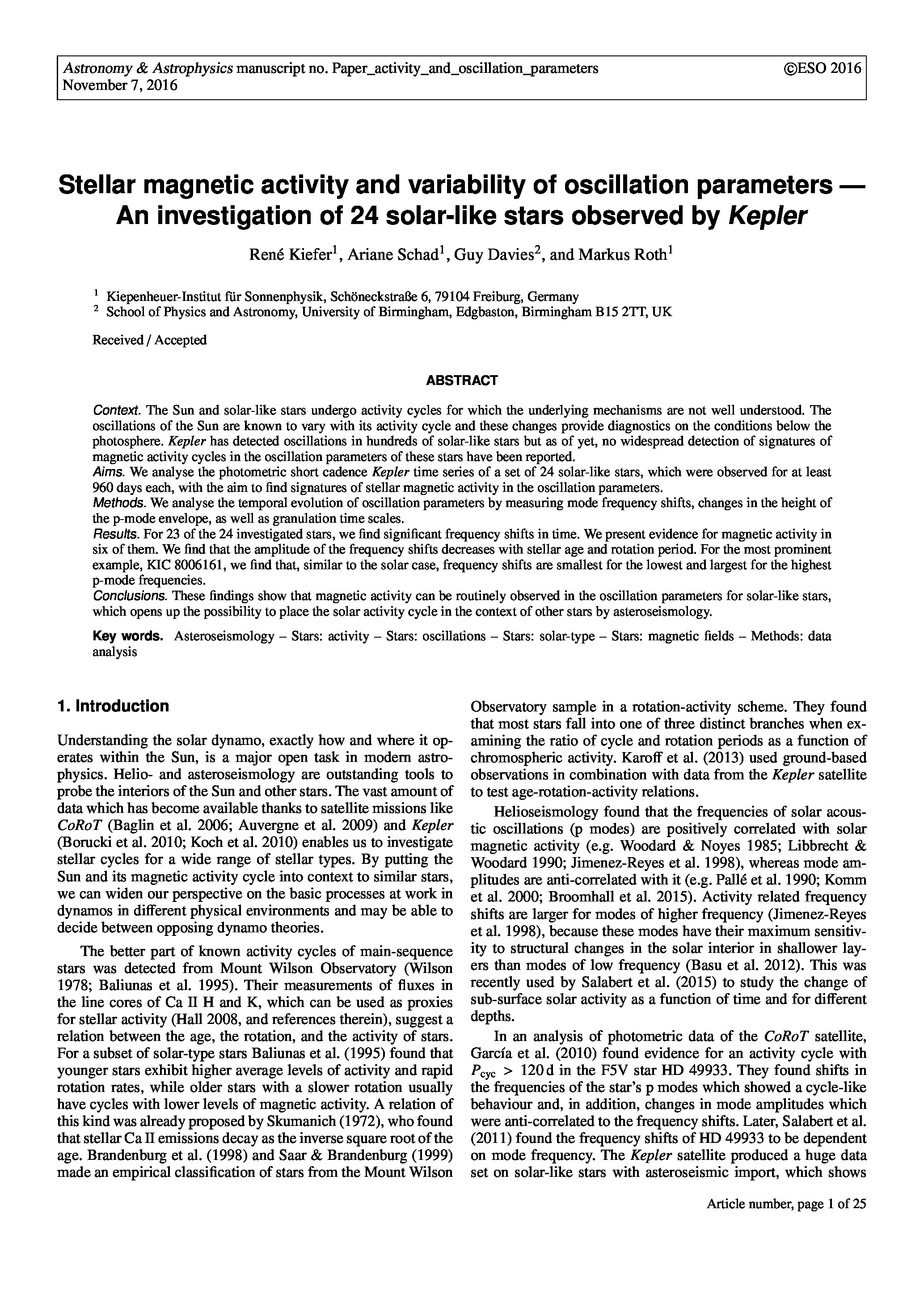Stellar magnetic activity and variability of oscillation parameters - An investigation of 24 solar-like stars observed by Kepler
Affiliation
Kiepenheuer-Institut für Sonnenphysik, Freiburg, Germany.
Main category
Natural Sciences (Astrophysics and Astrononmy)
Abstract
Context. The Sun and solar-like stars undergo activity cycles for which the underlying mechanisms are not well understood. The oscillations of the Sun are known to vary with its activity cycle and these changes provide diagnostics on the conditions below the photosphere. Kepler has detected oscillations in hundreds of solar-like stars but as of yet, no widespread detection of signatures of magnetic activity cycles in the oscillation parameters of these stars have been reported.
Aims. We analyse the photometric short cadence Kepler time series of a set of 24 solar-like stars, which were observed for at least 960 days each, with the aim to find signatures of stellar magnetic activity in the oscillation parameters.
Methods. We analyse the temporal evolution of oscillation parameters by measuring mode frequency shifts, changes in the height of the p-mode envelope, as well as granulation time scales.
Results. For 23 of the 24 investigated stars, we find significant frequency shifts in time. We present evidence for magnetic activity in six of them. We find that the amplitude of the frequency shifts decreases with stellar age and rotation period. For the most prominent example, KIC 8006161, we find that, similar to the solar case, frequency shifts are smallest for the lowest and largest for the highest p-mode frequencies.
Conclusions. These findings show that magnetic activity can be routinely observed in the oscillation parameters for solar-like stars, which opens up the possibility to place the solar activity cycle in the context of other stars by asteroseismology.
Do you have problems viewing the pdf-file? Download paper
here
If the paper contains inappropriate content, please
report the paper. You will be redirected to the landing page.
